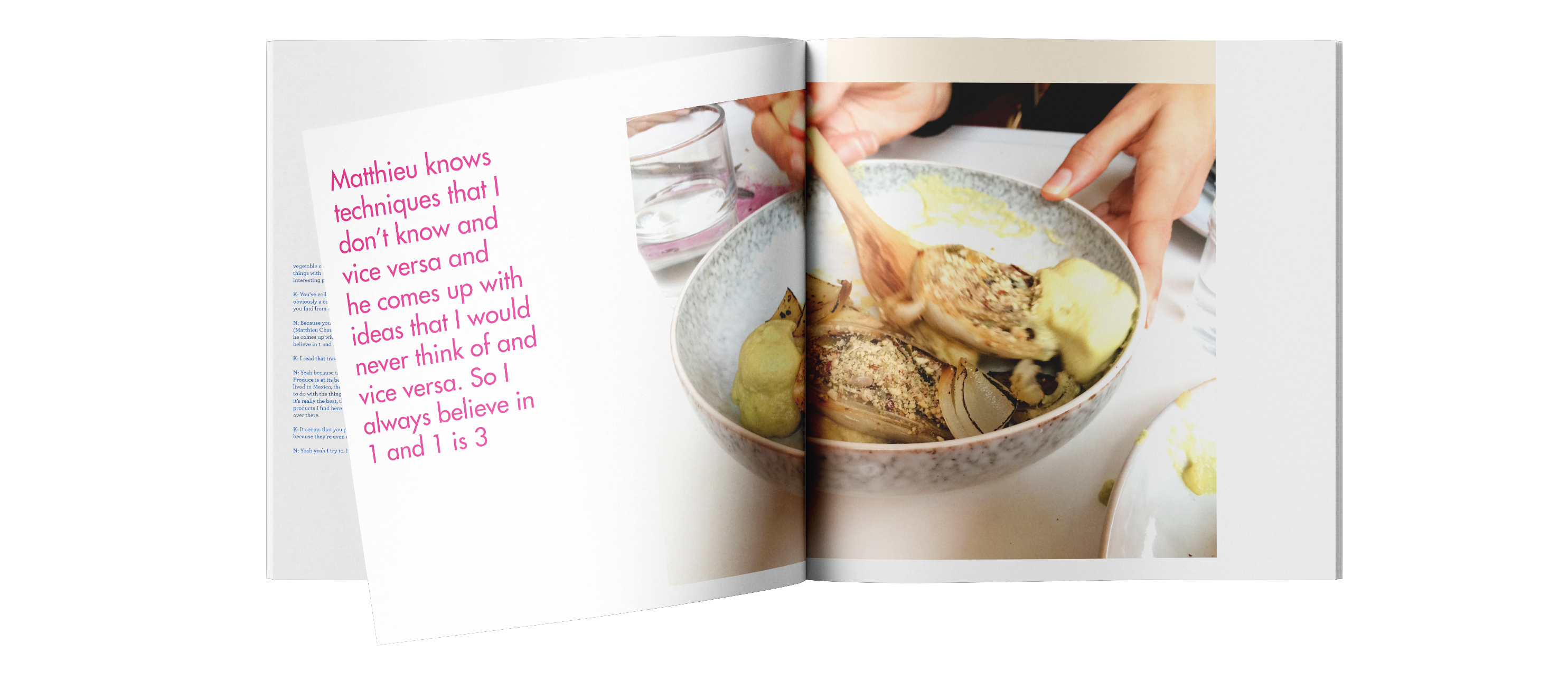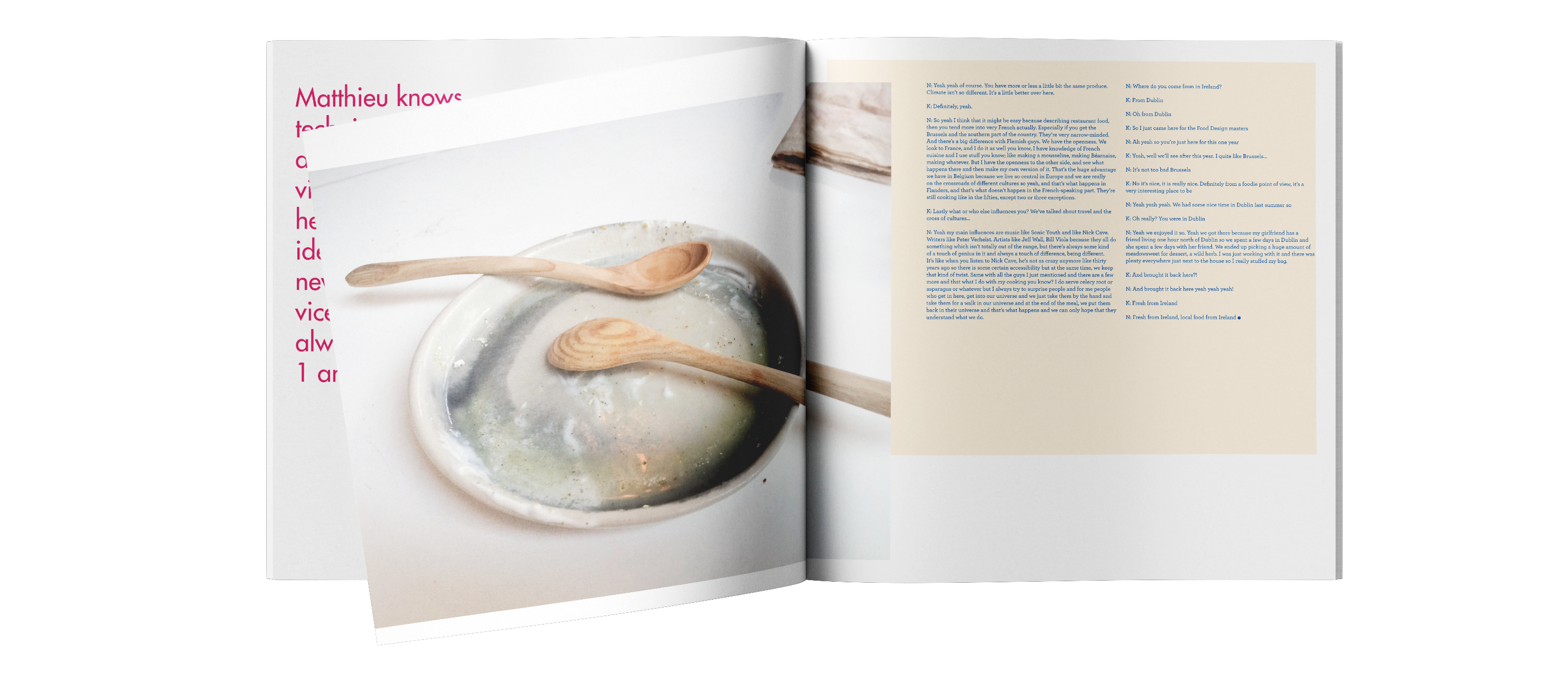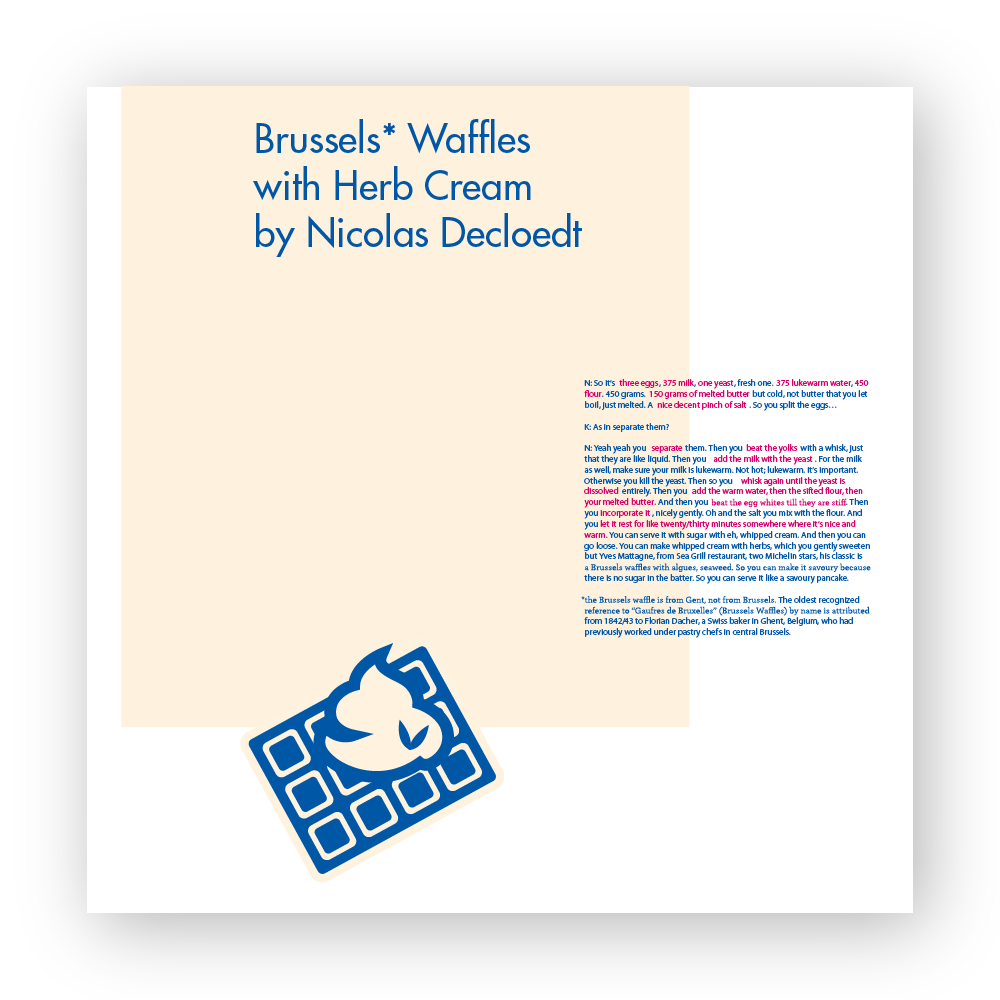I interviewed my favourite chef, Nicolas Decloedt in 2017. He works only with vegetables, never meat, never fish. He has recently gained huge recognition having had his restaurant named by Gault & Millau the best vegan restaurant in the world






Nicolas Decloedt 23.02.2017
It’s a blustery February Thursday. ‘Le Mercerie’ is closed for business, much to the disappointment of the occasional punter who assumes it’s open only to be informed (in the kindest way possible) of the actual opening hours. Through the glass front of the premesis, three khaki-clad soldiers stalk cautiously up the street, guns in hand. They offer a stark contrast to the peaceful cosy environment inside the restaurant, albeit a typical sight in ‘The Capital of Europe’. Situated at a rather busy intersection of five roads, it’s somewhat surprising that one can forget the passing of time while drinking and dining in this haven of fine food.Nicolas’ collaborator, highly-respected barman Matthieu Chaumont is in the process of photographing an elegant cream-coloured dish. It’s immaculately presented. He takes advantage of the natural light, shooting the creation right next to the window. A cook is called from the kitchen to lend a hand (literally to hold a glass).
After a satisfactory shot has been achieved, Nicolas gives me the dish, their new dessert to taste. It’s a stunning combination of burnt meringue, milk curd, Szechuan sorbet, oatmeal crunch and parsnip mousse. Perfectly balanced flavours, and a taste like nothing I’ve ever sampled before
N: (Speaking Dutch on the phone...Dries, my vegetable guy)
N: It’s nice to say that Brussels waffle doesn’t come from Brussels, Belgium. I don’t have the recipe here because it’s at home somewhere on the computer or in... I still have computer issues and Dropbox issues. I’m good at making sauces and stuff but not good at eh...
Which I like a lot about the Brussels waffle is that it’s very low in sugar actually. It doesn’t have any sugar in it as far as I know.
(aside: J’ai des nouvelles assiettes qui arrivent demain aussi.)
(Shows me the photo they took for social media)
K: Oh wow, beautiful! I love the leaves in the photo. It’s so cool. The light there is beautiful.
N: Yeah the light is very good here. It’s a little bit nordic, from the north side. So we have some light that comes in directly but most of the light is like indirect. South-facing is more over there so we have little direct sunlight. The nicest sunlight there is comes from the north side, because it’s reflected.
N: Yeah, no sugar. No sugar and very crunchy so that’s why I like it.
K: Yeah it’s completely different. I’ve tasted both of them and yeah they’re completely different.
N: You understand Dutch or not at all?
K: No but my friend, you know my friend Eva
N: Ah Eva yeah. I think Eva understands some Dutch. Yeah she might be able to, if you are lucky.
N: (to the kitchen: Derrière il y a encore un sac de café blanc de parlour...)
N: So it’s three eggs, 375 milk, one yeast, fresh one. 375 lukewarm water, 450 flour. 450 grams. 150 grams of melted butter but cold, not butter that you let boil, just melted. A nice decent pinch of salt. So you split the eggs...
K:As in separate them?
N:Yeah yeah you separate them. Then you beat the yolks with a whisk, just that they are like liquid. Then you add the milk with the yeast. For the milk as well, make sure your milk is lukewarm. Not hot, lukewarm. It’s important. Otherwise you kill the yeast. Then so you whisk again until the yeast is dissolved entirely. Then you add the warm water, then the sifted flour, then your melted butter. And then you beat the egg whites till they are stiff. Then you incorporate it, nicely gently. Oh and the salt you mix with the flour. And you let it rest for like twenty/thirty minutes somewhere where it’s nice and warm. You can serve it with sugar with eh, whipped cream. And then you can go loose. You can make whipped cream with herbs, which you gently sweeten but Yves Mattagne, from Sea Grill restaurant, two Michelin stars, his classic is a Brussels waffles with algues, seaweed. So you can make it savoury because there is no sugar in the batter. So you can serve it like a savoury pancake.
K:Does anyone else serve Brussels waffles as savoury?
N:I don’t think so.
(aside: Soixante par litre, ouais)
I don’t know too much actually. The only one I know is Yves Mattagne. I think it’s eh with caviar or whatever. And I think it’s interesting to have a look on the internet at where it comes from or whatever. The history.
—
K:I was interested to ask you about what it was like to transition from Michelin star cooking to specifically vegetable cooking.
N:I don’t see any difference. It’s not because we are cooking vegetables that we can’t cook on the same level because actually that’s what I do. I apply the techniques that I learned there to vegetables with the same precision, the same care. So for me this is, what I do now is sometimes even more refined than what I did in the restaurants.
K:And in your opinion does vegetable cooking get the respect it deserves?
N:Slowly. We are getting there slowly.
K:Slowly but surely.
N:Yeah yeah yeah yeah eh for a lot of people it’s still considered as being secondary because there is no meat there’s no fish. But I don’t, I think it’s eh... More and more chefs, especially the younger generation of chefs are more and more into vegetables and even if they put it on the same plate as some fish or meat, they do pay more attention to it and they go further on than what is classic which is just like blanching or boiling a vegetable in some hot water.
K:What do you think the future holds for cooking with vegetables?
N:Hmmm. I think the easy answer would be that it’s the future and I don’t think it is the future. I think it is the now. So I think it is the thing that has to be done now in a very good decent way. So I think it’s like now or never so that’s why there are people like us who have to step up and bring the vegetable cooking to another level to show people that you can do crazy things with that. You don’t need to put fish or meat on the plate to create an interesting plate, to create some gastronomy.
K:You’ve collaborated on several projects with plenty of other people. Here is obviously a collaboration, and the likes of Mary Pop-In. What are the benefits you find from collaborating with other people?
N: Because you always get influenced by the other person and Matthieu (Matthieu Chaumont) knows techniques that I don’t know and vice versa and he comes up with ideas that I would never think of and vice versa. So I always believe in 1 and 1 is 3. So that’s why. It’s just very interesting.
K: I read that travel has impacted on your cooking. In what way?
N: Yeah because that’s when I realise that local cooking is the only good way. Produce is at its best when it’s used in season and local. So that’s why when I lived in Mexico, the produce you have there is so tremendous. It has nothing to do with the things you find here which have travelled for a few weeks. So it’s really the best, the best part is when you take it immediately. The Mexican products I find here do not correspond to the souvenir (memory) I have from over there.
K: It seems that you put a lot of emphasis on your producers, your suppliers, because they’re even on your menu I think, who the suppliers are.
N: Yeah yeah I try to. I did it and now I should put them again but there’s a little lack of space so. But yeah no definitely I always talk about them, because without them, I couldn’t do what I do. They are the basics, they are and they deliver the basics of my cuisine
K: And what attracts you to wild and foraged food?
N: Well first of all, it’s cool to be in nature. And second, it’s just a lot of other tastes, flavours, textures sometimes so that makes it very very interesting.
K: And is it difficult to source?
N: Yes and no. Nothing is difficult once you know. So no it’s okay. It’s just keep your eyes and your ears open and people tell you stuff and teach you stuff.
K: How would you describe Belgian cuisine to someone who’s not familiar with it?
N: (long pause) That’s a hard one.
K: Or even more specifically Brabant, or Brussels.
N: Belgian cuisine, the homemade stuff, you know? It’s very, it’s basically very based on three parts; potato, vegetable, meat fish. That triangle. It always shifts around that.
K: It’s not unlike Irish food. I’m from Ireland and Irish food is pretty much like that as well.
N: Yeah yeah of course. You have more or less a little bit the same produce. Climate isn’t so different. It’s a little better over here.
K: Definitely, yeah.
N: So yeah I think that it might be easy because describing restaurant food, then you tend more into very French actually. Especially if you get the Brussels and the southern part of the country. They’re very narrow-minded. And there’s a big difference with Flemish guys. We have the openness. We look to France, and I do it as well you know, I have knowledge of French cuisine and I use stuff you know; like making a mousseline, making Béarnaise, making whatever. But I have the openness to the other side, and see what happens there and then make my own version of it. That’s the huge advantage we have in Belgium because we live so central in Europe and we are really on the crossroads of different cultures so yeah, and that’s what happens in Flanders, and that’s what doesn’t happen in the French-speaking part. They’re still cooking like in the fifties, except two or three exceptions.
K: Lastly what or who else influences you? We’ve talked about travel and the cross of cultures...
N: Yeah my main influences are music like Sonic Youth and like Nick Cave. Writers like Peter Verhelst. Artists like Jeff Wall, Bill Viola because they all do something which isn’t totally out of the range, but there’s always some kind of a touch of genius in it and always a touch of difference, being different. It’s like when you listen to Nick Cave, he’s not as crazy anymore like thirty years ago so there is some certain accessibility but at the same time, we keep that kind of twist. Same with all the guys I just mentioned and there are a few more and that what I do with my cooking you know? I do serve celery root or asparagus or whatever but I always try to surprise people and for me people who get in here, get into our universe and we just take them by the hand and take them for a walk in our universe and at the end of the meal, we put them back in their universe and that’s what happens and we can only hope that they understand what we do.
—
N: Where do you come from in Ireland?
K: From Dublin
N: Oh from Dublin
K: So I just came here for the Food Design masters
N: Ah yeah so you’re just here for this one year
K: Yeah, well we’ll see after this year. I quite like Brussels...
N: It’s not too bad Brussels
K: No it’s nice, it is really nice. Definitely from a foodie point of view, it’s a very interesting place to be
N: Yeah yeah yeah. We had some nice time in Dublin last summer so
K: Oh really? You were in Dublin
N: Yeah we enjoyed it so. Yeah we got there because my girlfriend has a friend living one hour north of Dublin so we spent a few days in Dublin and she spent a few days with her friend. We ended up picking a huge amount of meadowsweet for dessert, a wild herb. I was just working with it and there was plenty everywhere just next to the house so I really stuffed my bag.
K: And brought it back here?!
N: And brought it back here yeah yeah yeah!
K: Fresh from Ireland
N: Fresh from Ireland, local food from Ireland!
